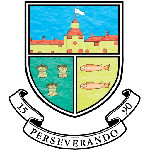ICT and Computing
| Mr Rance (Head of Department) | crance@conyers.org.uk | Mr Walters | jwalters@conyers.org.uk |
| Mr Rushworth | erushworth@conyers.org.uk |
Key Stage 3 Curriculum Map
Curriculum Intent
- To create confident and responsible digital citizens who have a secure understanding of IT systems and their uses in everyday life.
- To develop analytical and problem solving skills, approaching challenges in a logical and methodical manner.
- To inspire digital creativity within students, enabling them to produce unique solutions to real-world scenarios.
Key Knowledge and Skills
Year 7
Students will undertake an array of creative and logical units that will aim to inspire their enthusiasm for ICT. Year 7 will aim to provide the essential foundations that can be built upon in future KS3 years. Programming will be introduced using block based but then moving on to a more complex text based method. Interactiviey will be a focus for the creative units such as multimedia where students will learn how to podcast, create a digital video and also use animation software to promote an event. Online safety will allow students to know how to operate on the internet safely and have an understanding of social media dangers and how to avoid and protect from threats.
Year 8
Year 8 aims to develop students’ creativity and logical programming through a series of units. Skills taught within the first year will be pushed in units such as VB Games design and computing maths. New design units(Photography/ Photoshop and SketchUp 3D design.) will be explored that will cross collaborate with the Art and DT departments. Final students will consider the impacts of ICT systems on both culture and society.
Year 9
The final Key Stage 3 year will look to both equip students with knowledge to be competent IT users beyond academic education as well as prepare them for future studies. A range of business skills will be taught alongside more complex IT technical units such as cyber security and networks. The web design unit looks briefly at HTML/Java but mainly shows students how to make a website using Dreamweaver’s more intuitive features.
Sequence Discussion
Year 7
The Sparking the Gap project will give students a base insight into what Conyers expectations are from lessons. The initial binary input will be revisited and used throughout several units. Digital wellbeing is taught throughout Key Stage 3 and will build students knowledge of digital threats both to ICT Systems and also personal safety. This will need to be a consideration for any use of ICT and can be applied to any unit. The digital culture unit will educate students on the key cornerstones of ICT and its developments over a short space of time. Logic and boolean will be reviewed again and applied in context in the programming unit. The last unit is a creative unit and will give students the opportunity to transfer their logical creativity to a multimedia aspect.
Year 8
Computing Maths will build upon knowledge from year 7 and will allow students to explore how computers use binary to function. These skills include binary graphics which will be a cross curricular unit with Art that will investigate photography and photo editing. The creative skills that students will learn with Photoshop will aim to inspire students within the 3D design and Games design units that will follow. After a year of creating new ICT products we aim to give students a well balanced overview of ICT and will look at the impact the ICT has had on Society, cultures and the environment.
Year 9
Spreadsheets underpin most ICT systems in businesses and their use is essential to success. Students will learn how to model using Excel and will be able to relate these skills to real life problems. With a working life and KS4 preparation mindset the next unit will be cyber security, this will focus on keeping computing systems safe. This unit and the next (Network Systems) are very complimentary. Skills learnt in these units are computing heavy and as such a creative unit will follow. This will allow students to transfer there logical creativity into a more multimedia unit. Students will finish with a web design unit that encompasses both logical and multimedia creativity and as per all units will and can be applied to real life businesses.
Year 7
Half Term 1
7.1 Sparking the Gap and Introduction to Conyers ICT Systems
Half Term 2
7.2 Digital Wellbeing
Half Term 3
7.3 Digital Culture and History
Half Term 4
7.4 Using Databases with Google Database
Half Term 5
7.5 Programming with MicroBits and Python
Half Term 6
7.6 Interactive Multimedia
Year 8
Half Term 1
8.1 Digital Wellbeing
Half Term 2
8.2 Computing Mathematics
Half Term 3
8.3 Photography and Photoshop
Half Term 4
8.4 Google SketchUp Design
Half Term 5
8.5 Visual Basics: Game Design with Object Oriented coding
Half Term 6
8.6 Impact and Ethics of ICT
Year 9
Half Term 1
9.1 Digital Wellbeing
Half Term 2
9.2 Spreadsheet Design
Half Term 3
9.3 Networks and Network Security
Half Term 4
9.4 Graphics Design
Half Term 5
9.5 Multimedia Virtual Tour
Half Term 6
9.6 Web Design

